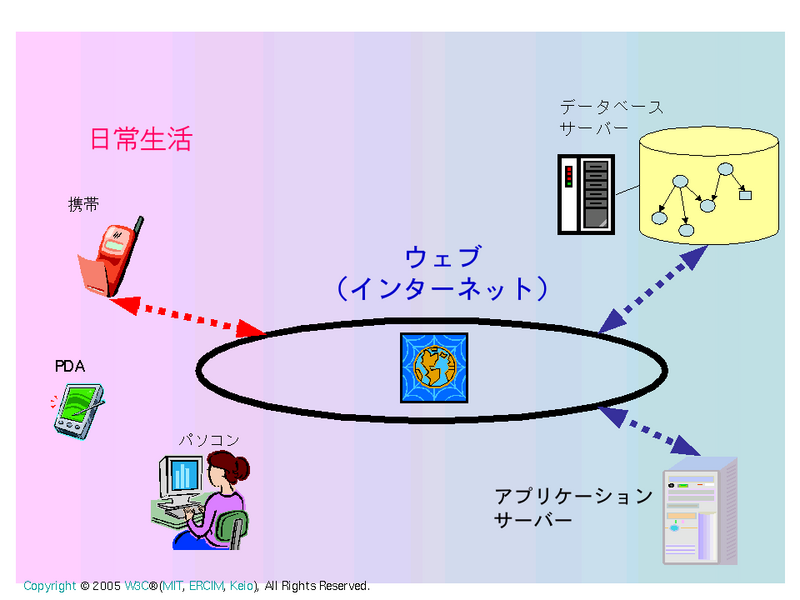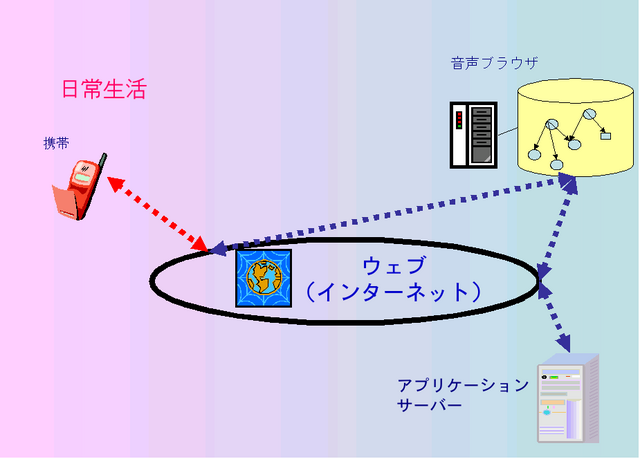



<?xml version="1.0" encoding="UTF-8"?> <!DOCTYPE vxml PUBLIC "-//Nuance/DTD VoiceXML 1.0//EN" "http://voicexml.nuance.com/dtd/nuancevoicexml-1-2.dtd" > <vxml> <form id="when"> <!-- 曜日 --> <field name="date"> <grammar src="Date.grammar#Date"/> <prompt>何曜日ですか?</prompt> <filled namelist="date"> <if cond="date=='getsuyoo'"> <prompt>月曜日ですね。</prompt> </if> <if cond="date=='kayoo'"> <prompt>火曜日ですね。</prompt> </if> <if cond="date=='suiyoo'"> <prompt>水曜日ですね。</prompt> </if> <if cond="date=='mokuyoo'"> <prompt>木曜日ですね。</prompt> </if> <if cond="date=='kinnyoo'"> <prompt>金曜日ですね。</prompt> </if> <if cond="date=='doyoo'"> <prompt>土曜日ですね。</prompt> </if> <if cond="date=='nichiyoo'"> <prompt>日曜日ですね。</prompt> </if> </filled> </field> <!-- 開始時刻 --> <field name="st"> <grammar src="Time.grammar#Time"/> <prompt>何時からですか?</prompt> <filled namelist="st"> <if cond="st=='ichiji'"> <prompt>一時からですね。</prompt> </if> <if cond="st=='niji'"> <prompt>二時からですね。</prompt> </if> <if cond="st=='sannji'"> <prompt>三時からですね。</prompt> </if> <if cond="st=='yoji'"> <prompt>四時からですね。</prompt> </if> <if cond="st=='goji'"> <prompt>五時からですね。</prompt> </if> <if cond="st=='rokuji'"> <prompt>六時からですね。</prompt> </if> <if cond="st=='shichiji'"> <prompt>七時からですね。</prompt> </if> <if cond="st=='hachiji'"> <prompt>八時からですね。</prompt> </if> <if cond="st=='kuji'"> <prompt>九時からですね。</prompt> </if> <if cond="st=='juuji'"> <prompt>十時からですね。</prompt> </if> <if cond="st=='juuichiji'"> <prompt>十一時からですね。</prompt> </if> <if cond="st=='juuniji'"> <prompt>十二時からですね。</prompt> </if> </filled> </field> <!-- 終了時刻 --> <field name="et"> <grammar src="Time.grammar#Time"/> <prompt>何時までですか?</prompt> <filled namelist="et"> <if cond="et=='ichiji'"> <prompt>一時までですね。</prompt> </if> <if cond="et=='niji'"> <prompt>二時までですね。</prompt> </if> <if cond="et=='sannji'"> <prompt>三時までですね。</prompt> </if> <if cond="et=='yoji'"> <prompt>四時までですね。</prompt> </if> <if cond="et=='goji'"> <prompt>五時までですね。</prompt> </if> <if cond="et=='rokuji'"> <prompt>六時までですね。</prompt> </if> <if cond="et=='shichiji'"> <prompt>七時までですね。</prompt> </if> <if cond="et=='hachiji'"> <prompt>八時までですね。</prompt> </if> <if cond="et=='kuji'"> <prompt>九時までですね。</prompt> </if> <if cond="et=='juuji'"> <prompt>十時までですね。</prompt> </if> <if cond="et=='juuichiji'"> <prompt>十一時までですね。</prompt> </if> <if cond="et=='juuniji'"> <prompt>十二時までですね。</prompt> </if> </filled> </field> <!-- チャンネル --> <field name="channel"> <grammar src="Channel.grammar#Channel"/> <prompt>何チャンネルですか?</prompt> <filled namelist="channel"> <if cond="channel=='ichi'"> <prompt>一チャンネルですね。</prompt> </if> <if cond="channel=='ni'"> <prompt>二チャンネルですね。</prompt> </if> <if cond="channel=='sann'"> <prompt>三チャンネルですね。</prompt> </if> <if cond="channel=='yonn'"> <prompt>四チャンネルですね。</prompt> </if> <if cond="channel=='go'"> <prompt>五チャンネルですね。</prompt> </if> <if cond="channel=='roku'"> <prompt>六チャンネルですね。</prompt> </if> <if cond="channel=='nana'"> <prompt>七チャンネルですね。</prompt> </if> <if cond="channel=='hachi'"> <prompt>八チャンネルですね。</prompt> </if> <if cond="channel=='kyuu'"> <prompt>九チャンネルですね。</prompt> </if> <if cond="channel=='juu'"> <prompt>十チャンネルですね。</prompt> </if> <if cond="channel=='juuichi'"> <prompt>十一チャンネルですね。</prompt> </if> <if cond="channel=='juuni'"> <prompt>十二チャンネルですね。</prompt> </if> </filled> </field> <prompt>では録画します。</prompt> <catch event="nomatch noinput"> <prompt>すいません。聞き取ることができませんでした。</prompt> <goto next="#when"/> </catch> </form> </vxml>
Date
[
[げつよう げつ げつようび] {<date "getsuyoo">}
[かよう か かようび] {<date "kayoo">}
[すいよう すい すいようび] {<date "suiyoo">}
[もくよう もく もくようび] {<date "mokuyoo">}
[きんよう きん きんようび] {<date "kinnyoo">}
[どよう ど どようび] {<date "doyoo">}
[にちよう にち にちようび] {<date "nichiyoo">}
]
Time
[
[いちじ いち] {<time "ichiji">}
[にじ に] {<time "ni">}
[さんじ さん] {<time "sannji">}
[よじ よん] {<time "yoji">}
[ごじ ご] {<time "goji">}
[ろくじ ろく] {<time "rokuji">}
[しちじ しち なな] {<time "shichiji">}
[はちじ はち] {<time "hachiji">}
[くじ きゅう] {<time "kuji">}
[じゅうじ じゅう] {<time "juuji">}
[じゅういちじ じゅういち] {<time "juuichiji">}
[じゅうにじ じゅうに] {<time "juuniji">}
]
Channel
[
[いっちゃん いち] {<channel "ichi">}
[にちゃん に] {<channel "ni">}
[さんちゃん さん] {<channel "sann">}
[よんちゃん よん し] {<channel "yonn">}
[ごちゃん ご] {<channel "go">}
[ろくちゃん ろく] {<channel "roku">}
[ななちゃん なな しち] {<channel "nana">}
[はっちゃん はち] {<channel "hachi">}
[きゅうちゃん きゅう] {<channel "kyuu">}
[じゅっちゃん じゅう] {<channel "juu">}
[じゅういっちゃん じゅういち] {<channel "juuichi">}
[じゅうにちゃん じゅうに] {<channel "juuni">}
]
<?xml version="1.0" encoding="us-ascii"?>
<!-- A wrapper state that contains all other states in this file
- it represents the complete state machine -->
<scxml xmlns="http://www.w3.org/2005/07/scxml"
version="1.0"
initalstate="Main">
<state id="Main">
<!-- its initial state is Test1 -->
<initial>
<transition>
<target next="Test1"/>
</transition>
</initial>
<!-- Really simple state showing the basic syntax. -->
<state id="Test1">
<initial>
<transition>
<target next="Test1Sub1"/>
</transition>
</initial>
<!-- Runs before we go into the substate -->
<onentry>
<log expr="'Inside Test1'"/>
</onentry>
<!-- Here is our first substate -->
<state id="Test1Sub1">
<onentry>
<log expr="'Inside Test1Sub1.'"/>
</onentry>
<onexit>
<log expr="'Leaving Test1Sub1'"/>
</onexit>
<!-- Go to Sub2 on Event1 -->
<transition event="Event1">
<target next="Test1Sub2"/>
</transition>
</state>
<!-- Here is the second substate
- It is final, so Test1 is done when we get here -->
<state id="Test1Sub2" final="true">
<onentry>
<log expr="'Inside Test1Sub2...'"/>
</onentry>
<onexit>
<log expr="'Leaving Test1Sub2'"/>
</onexit>
</state>
<!-- We get this event when we reach Test1Sub2. -->
<transition event="Test1.done">
<target next="Test2"/>
</transition>
<!-- We run this on the way out of Test1 -->
<onexit>
<log expr="'Leaving Test1...'"/>
</onexit>
</state>
<state id="Test2">
<initial>
<transition>
<target next="Test2Sub1"/>
</transition>
</initial>
<!-- This time we reference a state
- defined in an external file -->
<state id="Test2Sub1" src="Test2Sub1.scxml"/>
<!-- This time we reference a state
- defined in an external file and
- use the templating support to add
- an onexit hander. -->
<state id="Test2Sub2" src="Template.scxml">
<onexit>
<log expr="'Leaving Substate Test2Sub2'"/>
</onexit>
</state>
<!-- Test2Sub2 is defined as final, so this
- event is generated when we reach it -->
<transition event="Test2.done">
<target next="Test3"/>
</transition>
</state>
<state id="Test3">
<initial>
<transition>
<target next="Test3Sub1"/>
</transition>
</initial>
<state id="Test3Sub1">
<onentry>
<log expr="'Inside Test3Sub1...'"/>
<!-- Send our self an event in 5s -->
<send event="Timer" delay="5s"/>
</onentry>
<transition event="Timer">
<!-- Transition on to Test4.
- This will exit both us and our parent. -->
<target next="Test4"/>
</transition>
<onexit>
<log expr="'Leaving Test3Sub1...'"/>
</onexit>
</state>
<onexit>
<log expr="'Leaving Test3...'"/>
</onexit>
</state>
<state id="Test4">
<onentry>
<log expr="'Inside Test4...'"/>
</onentry>
<!-- Here we use the inline features of
- target to create our scratch state.-->
<initial>
<transition>
<target>
<state id="Test4Sub1" >
<onexit>
<log expr="'Leaving Test4Sub1...'"/>
</onexit>
<!-- This transition causes the state to exit immediately
- after entering Test4Sub1. The transition has no event or guard
- so it is always active -->
<transition>
<target next="Test5"/>
</transition>
</state>
</target>
</transition>
</initial>
</state>
<state id="Test5">
<onentry>
<log expr="'Inside Test5...'"/>
</onentry>
<initial>
<transition>
<target next="Test5P"/>
</transition>
</initial>
<!-- Fire off our parallel states -->
<parallel id="Test5P">
<state id="Test5PSub1" final="true">
<onentry>
<log expr="'Inside Test5PSub1...'"/>
</onentry>
</state>
<state id="Test5PSub2" final="true">
<onentry>
<log expr="'Inside Test5PSub2...'"/>
</onentry>
</state>
<onexit>
<log expr="'all parallel states done'"/>
</onexit>
</parallel>
<!-- The parallel states are all final, so this
- event is generated immediately -->
<transition event="Test5P.done">
<target next="Test6"/>
</transition>
</state>
<!--
- This state shows invocation of external component
- We will use CCXML + VoiceXML actions as an example
- as it is a good smoke test to show how it all
- fits together.
- Note: Odds are in a real app you would
- split this over several states but we
- are trying to keep it simple here.
-->
<state id="Test6"
xmlns:ccxml="http://www.w3.org/2002/09/ccxml"
xmlns:v3="http://www.w3.org/2005/07/vxml3">
<onentry>
<!--
- Use <send> to run a createcall using the
- CCXML component / Event I/O Processor
-->
<var name="dest" expr="'tel:+18315552020'"/>
<send targettype="ccxml" event="ccxml:createcall" namelist="dest"/>
</onentry>
<transition event="ccxml:connection.connected" name="evt">
<!--
- Here we use example V3
- Custom Action Elements instead of send .
-->
<v3:form id="HelloWorld">
<v3:block><v3:prompt>Hello World!</v3:prompt></v3:block>
</v3:form>
</transition>
<!--
- Here we are using the low level <send>
- element to run a v3 form. Note that the event "v3:HelloWorld.done"
is assumed either to be set/sent explicitly by the v3:form code or
implicitly by some process outside of the v3:form
-->
<transition event="v3:HelloWorld.done" name="evt">
<var name="src" expr="'helloworld2.vxml'"/>
<var name="id" expr="'HelloWorld'"/>
<send targettype="v3" event="v3:formstart" namelist="src id"/>
</transition>
<transition event="v3:HelloWorld2.done" name="evt">
<ccxml:disconnect connectionid="evt.connectionid"/>
</transition>
<transition event="ccxml:connection.disconnected">
<!--
- Here we are using the <exit/> shorthand to
- move ourself to a final state.
- In this example you could do <target next="Done"/>
- and get the same result.
-->
<exit/>
</transition>
<!-- Transitions to handle events generated by the component
- component invoked successfully. this transition has no target
- so Test6 is not exited.
- We are just going to log tha we were able to send an event. -->
<transition event="send.successful">
<log expr="'Event was able to be sent'"/>
</transition>
<!--
- If we get an error event we move to the Done state that
- is a final state.
-->
<transition event="error.send">
<log expr="'Sending to and External component failed'"/>
<target next="Done"/>
</transition>
<onexit>
<log expr="'Finished with external component'"/>
</onexit>
</state>
<!-- This final state is an immediate child of Main
- when we get here, Main.done is generated. -->
<state id="Done" final="true"/>
<!-- End of Main > -->
</state>
</scxml>